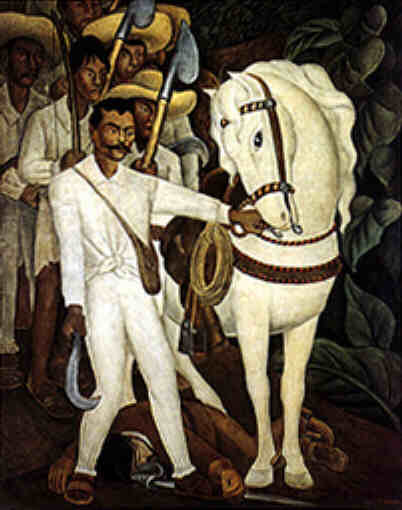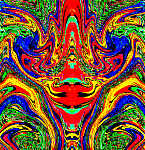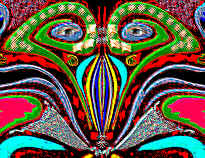— Diego Rivera produced murals on social themes. He was born in Guanajuato and educated in Mexico City. He studied painting in Europe between 1907 and 1921. Rivera returned to Mexico in 1921 and became prominent in the country's revival of mural painting. Believing art should serve working people and be readily available to them, he concentrated on creating large frescoes portraying the history and social problems of Mexico. He painted them on the walls of public buildings, including the National Palace in Mexico City (1929) and the Palace of Cortes in Cuernavaca (1930). Greatly influenced by indigenous Mexican art, Rivera's murals are simple and bold and, as social comment, have aroused much controversy among political and religious groups in both the United States and Mexico.
— Diego Rivera was one of the greatest artists in the XXth century. Born in Guanajuato Mexico, in 1892 he moved to Mexico City with his family. He studied in the San Carlos Academy and in the carving workshop of artist José Guadalupe Posada, whose influence was decisive. Later in Paris, he received the influence of post-modernism and cubism, the mediums in which he expressed himself with ease. Diego Rivera with the use of classicist, simplified and colorful painting recovered the pre-columbian past catching the most significant moments in mexican history: the earth, the farmer, the laborer, the custumes and popular characters. Diego Rivera 's legacy to modern mexican art was decisive in murals and canvas; he was a revolutionary painter looking to take art to the big public, to streets and buildings, managing a precise, direct, and realist style, full of social content.
— LINKS
— Autorretrato dedicado a Irene Rich (1941, 120kb)
–- Self-portrait (574x423pix, 77kb)
–- Self-portrait (1930 lithograph, 40x28cm; 2/3 size, 234kb)
–- Two Women and a Child (1926, 74x80cm; recommended 3/10 size_ .ZOOM to 3/5 size) _ Only one hand and the hair of the baby is seen, as it is held by a woman seen from the back. Both women are sitting on the ground.
 —
Agrarian Leader Zapata (1932) _ The legend of the Mexican Revolution,
Emiliano Zapata [1873-1919], was a theme of several representations by masterful
Diego Rivera during his pictorial trajectory. The first time he painted
Zapata, was on his cubist work Paisaje
zapatista (1915), then he appears on the murals of the Universidad
Autónoma de Chapingo (1926-1927); after that he is seen as the great revolutionary
figure of Mexico on the murals he realized inside the Secretaría de Educación
Pública in 1928. It can´t be forgotten the way in which the celebrated phrase
"Tierra y libertad" was painted by the "sapo-rana" artist, as he called
himself, on the murals of Palacio Nacional (1929, 1930 and 1935).
—
Agrarian Leader Zapata (1932) _ The legend of the Mexican Revolution,
Emiliano Zapata [1873-1919], was a theme of several representations by masterful
Diego Rivera during his pictorial trajectory. The first time he painted
Zapata, was on his cubist work Paisaje
zapatista (1915), then he appears on the murals of the Universidad
Autónoma de Chapingo (1926-1927); after that he is seen as the great revolutionary
figure of Mexico on the murals he realized inside the Secretaría de Educación
Pública in 1928. It can´t be forgotten the way in which the celebrated phrase
"Tierra y libertad" was painted by the "sapo-rana" artist, as he called
himself, on the murals of Palacio Nacional (1929, 1930 and 1935). In this image [>], we see a Zapata painted in 1930-1931, that guides his agrarian revolutionaries; this panel is part of the removable mural that Rivera made for his individual exhibit in the Modern Art Museum of New York. Zapata appears with his white vestment in front of his revolutionaries; at his feet lies a fallen enemy, that no doubt is a property-owner. Emiliano Zapata with his left hand dominates a steed, that reminds us much to the horses of the Renaissance artist Paolo Uccello [1397 – 10 Dec 1475]. We just need to remember that Riviera on his trip to Italy from 1920 to 1921, produced several sketches about the horses that are part of Uccello´s masterpiece The Battle of San Romano. By this work, Rivera also swears allegiance to the lands of South Mexico, that was the battlefield of the agrarian revolutionary, as he presents a splendid vegetation, a humid land and in the piece can be felt that freshness of the thickness when printing greenish tones of incomparable richness. Diego Rivera is one of the Mexican Art's pillars, without him, its history would have been different.
–- Zapata (1932 lithograph, 41x33cm; 3/5 size, 202kb) _ this is the black-and-white lithograph made after the painting shown above.
— Sueño de una Tarde de Domingo en el Parque de la Alameda (1948; 478x1790pix, 116kb) _ detail in center (642x831pix, 159kb) _ detail on the right (519x460pix, 70kb)
— Noche de los Ricos (1928; 1035x495pix, 140kb) _ the banner at the top read “todos los pesos duros”.
–- Open Air School (1932 lithograph; 786x1020pix, 245kb) _ The nine peasant students sitting on the ground around the teacher seem to range from about 8 to 90 years old. They are observed by a gun-toting guard mounted on a horse, while farm laborers with three teams of mules plough in the background.
–- Fruits of Labor (1932 lithograph; 1120x792pix, 271kb) _ A woman passes out an apple each to the six children surrounding her, while a man at her side hold a book open toward the viewer.
— Vista de Toledo (1912; 133kb)
— Paisaje zapatista- El guerrillero (1915; 98kb)
— Maternidad- Angelina y el niño Diego (87kb)
— La fiesta del maíz (1924; 116kb) from the cycle Political Vision of the Mexican People
— Festival de las flores (1925; 103kb)
— El arsenal- Frida Kahlo repartiendo armas _ detail _ from the cycle Political Vision of the Mexican People (1928; 142kb)
— Lupe Marín (1938; 106kb)
— Modesta e Inesita (1939; 108kb)
— Natasha Zakólkowa Gelman (1943; 119kb)
— Desnudo con alcatraces (1944; 125kb)
— Pre-Hispanic America (1950, 140kb) book cover for Canto General of Pablo Neruda

